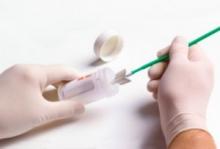
There has been some concern and confusion amongst patients about the changes planned to start in December 2017 in Australia. Pap smears, as we know it, are being phased out for routine testing in place of the more diagnostically accurate HPV-DNA test.
So let me review the major aspects:
WHAT IS THE DIFFERENCE BETWEEN A PAP AND HPV DNA TEST? WHY THE CHANGE?
Pap tests look at cells removed from the surface of the cervix and try to assess whether they look normal. It is prone to false positives, for example cells that look different due to infection or menopause and false negatives, for example whole cervix is not tested or there aren’t adequate cell numbers. This means some are labelled abnormal when there is no problem. Some may simply require repeat testing. HPV DNA testing looks only at whether the virus types associated with cancer are present. HPV testing is more sensitive and will reduce the number of false negatives. Following this with automatic Pap testing of positive results will reduce false positives and unnecessary follow-up. No screening test is 100% and so new symptoms should still be investigated.
WHAT IS THE TEST?
HPV (Human Papilloma Virus or wart virus) is found in almost all high grade cervical pre-cancers (CIN and AIS) and invasive cervical cancer. However having HPV DOES NOT MEAN YOU HAVE OR WILL GET CANCER. Persistent infection with HPV means you are at risk and this is why follow-up is important until your body clears the infection.
The screen involves testing for HPV DNA directly with identification of subtypes 16/18/45 as these are the most oncogenic (cancer causing). There are hundreds of types of HPV but only 13 are of concern in causing cervical cancer. Positive 16/18/45 results will be referred straight to colposcopy (a painless examination of the cervix with magnification using a colposcope). Those with other positive results will have a Pap done on the same fluid – no further collection is needed. During the colposcopy the doctor is looking for visual changes to the cervix to determine if the abnormality requires biopsy or further treatment…or a ‘wait and monitor’ approach. High grade results will be referred for colposcopy; this is the same as current management. Negative smears or Low grade results will have repeat HPV testing in 12 months to allow the body the chance to fight the infection and heal itself. If the second HPV test returns a positive result then the patient will be referred for colposcopy regardless of pap result.
COSTS
At this stage the Government plans to continue to offer a Medicare funded service for the pathology component of having a HPV DNA test the same as it did for Pap smears, for all Medicare card holders. Of course there may be a consultation fee with your GP or specialist to have this collected.
AGE
Starting age for testing has increased to 25. This aims to avoid picking up transient infections and minor changes that will clear on their own. These are common with the onset of sexual activity; it is estimated up to 90% of adults have HPV at some stage. Between the age of 70-74 years women will have their last test and may then stop if normal. Any woman with abnormal bleeding/pain can and should be screened when the problem occurs.
COLLECTION METHOD
No change – will be collected in same manner as a pap smear by doctor/nurse practitioner
HOW OFTEN DO I NEED TO HAVE AN HPV TEST?
Five yearly if the HPV test returns a normal result.
WON'T I GET CANCER IF IT IS SO LONG BETWEEN SMEARS?
Studies show no difference in pickup of high grade pre- cancer with 5 yearly compared to 2-3 yearly screening interval in those who are HPV negative.
SHOULD I GET THE HPV VACCINE?
Free Vaccination is routinely offered in early high school as it is ideally given prior to commencing sexual intercourse. The vaccine covers types 16/18 which account for 70% of problems. Most infection occurs with the onset of intercourse and the majority of those infected will develop a transient infection but will then build immunity. If in a stable relationship and HPV negative you are at low risk of developing problems. If you are entering a new relationship you can consider vaccination as you may be exposed to new subtypes.
Reference: www.nps.org.au/nps-radar/cervical-screening-2017
If you have any concerns please discuss with your GP or specialist gynaecologist.
